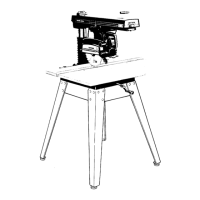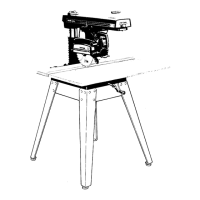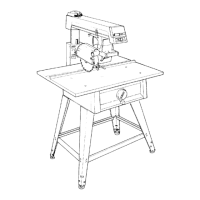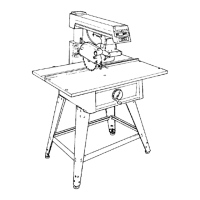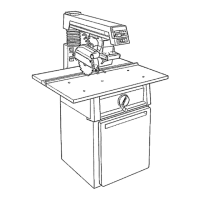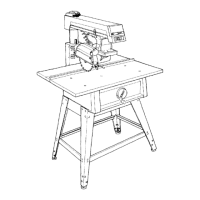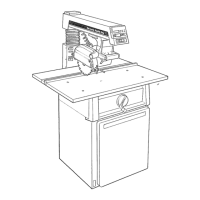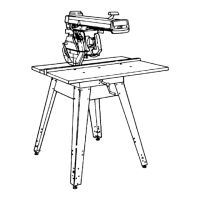electrical connections
2,
3.
Connections for 120V A.C.
a. Remove nameplate cover from motor to expose
terminal board.
b. The wires inside of the motor must be connected as
shown:
(1) The orange-colored wire on number 6 terminal.
(2) The brown-colored wire on number 5 terminal.
c. Use the 120V power-cord plug furnished with your
saw.
j 4,
/ '-' l
/
/ _ i
o®® 00 2 2)
BP,OWI"-, _\ _T- ORANGE
Connections for 240V A.C.
a. The wires inside the motor terminal box must be
connected as follows:
(1) The orange-colored wire on number 8 terminal.
(2) The brown-colored wire on number 7 terminal.
b. Replace the 120V power-cord plug with a (3-blade)
240V plug, connecting the power-cord white and
black leads, respectively, to the two "hot" plug
blades - and connecting the power-cord grounding
wire to the plug ground prong.
'GROUNDliNG BLADE IS
LONGEST OF 3 BLADES
240V PLUG & RECEPTACLE
GROI. NDED
OUTLET BOX
NO ADAPTER IS
AVAILABLE FOR
FHIS TYPE PLUG
Plug you_ saw into a 240V, 3-blade receptacle.
d.
Make certain the receptacle is connected to a 240V
A-C power supply through a 240V branch circuit
having at least a 15-amp. capacity, and protected by
a 15-amp. time-delay fuse or circuit breaker.
MOTOR SAFETY PROTECTION
NOTE: This motor should be blown out, or "vacuumed",
frequently to prevent sawdust interference with normal
motor ventilation.
Your saw motor is equipped with a manual-reset,
thermal-overload protector designed to open the power-line
circuit when the motor temperature exceeds a safe value.
1. If the protector opens the line and stops the saw motor,
immediately press the saw switch to the "'OFF"
position, and allow the motor to cool.
2. After cooling to a safe operating temperature, the
overload protector can be closed manually by pushing
in the red button on the top of the motor. If the red
button will not snap into place immediately, the motor
is still too hot and must be allowed to cool for a while
longer. In some cases this may take 20-30 minutes. (An
audible click will indicate protector is closed.}
3. As soon as the red button will snap into running
position, the saw may be started and operated
normally, by pulling out the saw switch to the "'ON'"
position.
4. Frequent opening of fuses or circuit breakers may result
if motor is overloaded, or if the motor circuit is fused
differently from recommendations. Overloading can
occur if you feed to rapidly or if your saw is misaligned
so that the blade heels. Do not use a fuse of greater
capacity without consulting a qualified electrician.
5. Although the motor is designed for operation on the
voltage and frequency specified on motor nameplate,
normal loads will be handled safely on voltages not
more than 10% above or below the nameplate voltage.
Heavy loads, however, require that voltage at motor
terminals equals the voltage specified on nameplate.
6. Most motor troubles may be traced to loose or
incorrect connections, overloading, reduced input
voltage (such as small size wires in the supply circuit} or
to an overly-long supply circuit. Always check the
connections, the load and the supply circuit, whenever
the motor fails to perform satisfactorily. Check wire
sizes and lengths with the table following.
WIRE SIZES
The use of any extension cord will cause some loss of
power. To keep this to a minimum and to prevent
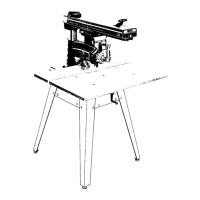
